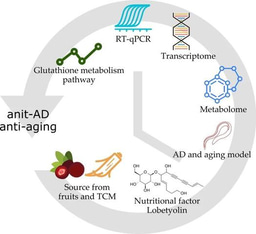High, dry and very, very chilly.
Published in Microbiology
I first became captivated by the amazing Antarctic Dry Valleys when I had the pleasure to be the handling editor for this a review from Craig Cary and colleagues for Nature Reviews Microbiology:
Nature Reviews Microbiology 8, 129-138 (February 2010) | doi:10.1038/nrmicro2281
On the rocks: the microbiology of Antarctic Dry Valley soils
S. Craig Cary, Ian R. McDonald, John E. Barrett & Don A. Cowan
As noted by Cary and colleagues in their excellent review, on his visit to the Dry Valleys in 1903 Captain Scott (yes that one) wrote "“we have seen no living thing, not even a moss or lichen”. The idea that no life survived in Dry Valley soils persisted for many decades after. However over the last 30-40 years this view has changed as a wide diversity of microbial life has been found across the soils of the Dry Valleys as part of a simple biota that consists of a few tropic levels.
Well, now it seems that there are parts of the Dry Valleys where microbial life is barely hanging on, as shown in the just released manuscript from Jacqueline Goordial and colleagues:
The ISME Journal advance online publication 19 January 2016; doi: 10.1038/ismej.2015.239
Nearing the cold-arid limits of microbial life in permafrost of an upper dry valley, Antarctica
Jacqueline Goordial, Alfonso Davila, Denis Lacelle, Wayne Pollard, Margarita M Marinova, Charles W Greer, Jocelyn DiRuggiero, Christopher P McKay and Lyle G Whyte
They report on permafrost at an elevated site in the McMurdo Dry Valleys (1700m above sea level) where the mean temperature is -23degC and it never gets above freezing, ever. At this site they find that microbial biomass (total and culturable) is extremely low and microbial activity undetectable. So there may actually be some limits for low temperature and aridity on this planet, beyond which microbial life becomes untenable.
The Dry Valleys are amazing, almost alien environments and for this ex-fungal cell biologist, those individuals that carry out microbiology research in these inhospitable reaches are equally amazing and admirable. It was -3degC as I drove to work this morning and that was plenty cold enough for me; apparently the microbes and microbiologists of the Dry Valleys are a hardier bunch.
Follow the Topic
-
Nature Microbiology

An online-only monthly journal interested in all aspects of microorganisms, be it their evolution, physiology and cell biology; their interactions with each other, with a host or with an environment; or their societal significance.
Related Collections
With Collections, you can get published faster and increase your visibility.
Progress towards the Sustainable Development Goals
Publishing Model: Hybrid
Deadline: Ongoing
The Clinical Microbiome
Publishing Model: Hybrid
Deadline: Mar 11, 2026





Please sign in or register for FREE
If you are a registered user on Research Communities by Springer Nature, please sign in